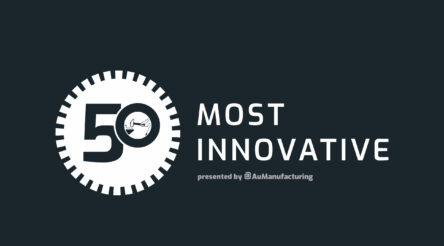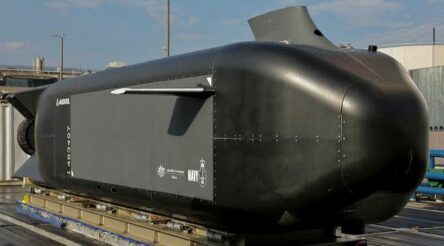A new deal plan for manufacturing – innovation and bi-partisanship by Tom Kenyon

Innovation is featuring in submissions so far in our campaign to crowd source a continues @AuManufacturing’s campaign to crowd source a new deal manufacturing policy with eight keys to unlocking our manufacturing future. Send your ideas or make a submission to [email protected].”>new deal plan for manufacturing. Today Tom Kenyon looks at how to kickstart new businesses and accelerate commercialisation. Send your ideas or make a submission to [email protected].
The Second World War exposed Australia’s vulnerability due to its isolation and lack of strategic heavy industry. COVID-19 is doing the same thing.
Fortunately pandemics and wars are rare but they both occur and when they do, we need a strategic manufacturing capacity.
The fundamental realities that created our current situation haven’t changed. China and other parts of Asia are still cheaper places to manufacture using traditional manufacturing processes.
After the pandemic, unless we do something differently, manufacturing will return to its pre-pandemic state.
The good news is that manufacturing is changing. 3D printing for instance is an incredible opportunity for Australia in a number of ways.
Australia can be a significant player in 3D manufacturing because no one country or manufacturer yet dominates the market. Companies like Titomic, Amaero, AML Technologies and Aurora Labs are doing incredibly well in international markets.
Also, the use of metal powders in some 3D printers gives us the opportunity to create new ways to refine and value add to our ores instead of importing metals from overseas. These powders will become an export opportunity in their own right.
The commercialisation of research has a big role to play here. New companies like those mentioned above have come from some of the very good research capacity we have.
Commercialising research and creating start-ups takes time. Going from the lab to an exit event where investors can receive a financial return can easily take seven years (or longer for bio-tech companies).
A new manufacturing strategy will need to be in place and funded to last at least that long.
Fifteen to 20 years would be more effective but those timeframes need a degree of maturity and bi-partisan policy agreement not seen since the Hawke-Keating/Howard years.
The government needs to develop manufacturing policy in consultation with the opposition. No government can achieve long-term policy continuity if it develops policy in isolation and expects an opposition to support and continue it upon a change of government.
Culturally difficult? Yes, but quick and cheap.
Some current policy is good. Tax concessions provided to Early Stage Venture Capital Limited Partnerships (ESCVLPs) and Venture Capital Limited Partnerships (VCLPs), which are designed to fund start-ups, are excellent but not well known and are under-utilised by investors.
The same is true of Australian Fund of Funds (AFOFs) that are able to invest into a selection of ESVCLPs and VCLPs.
The government should cornerstone an AFOF dedicated to investing in ESVCLPs and VCLPs that seek to invest in the commercialisation of research that has applications in strategic industries.
It should also require our superannuation funds, a strategic asset in themselves, to invest a tiny amount of their funds in commercialising manufacturing research.
In 2018, superannuation savings totalled $2.7 trillion. An investment of $200m into an AFOF by super funds acting collectively would be less than 0.01% of funds under management and yet would still make a significant contribution towards commercialising research.
While Australian universities and research institutions spend billions each year on research, it is widely dispersed. Universities, on the whole, understand their importance to the economy but rarely work in a co-ordinated or co-operative way with each other.
The way in which researchers are rewarded for their research also has to change. Some universities allow researchers to take equity in companies that are created to commercialise their research, but many do not.
The government will need to require the Australian Research Council (which funds a significant amount of Australia’s research) to prioritise manufacturing and materials in its grant processes even at the expense of current research priorities.
Additionally, universities are good at getting research to the proof-of-concept stage but are often reluctant to fund further development to get a product or process to a point where investors are more likely to invest.
This “Valley of Death” can be bridged by universities getting better at assessing commercial potential, being more prepared to take risks and being more prepared to take equity in companies created to commercialise their research.
Finally, Australian investors should be encouraged to invest in manufacturing.
Our tax regime has produced over-investment in real estate, inflated housing prices and has distorted investment markets away from productive asset classes.
Better real estate taxes would move investment away from our unproductive real estate love affair and into manufacturing and other productive industries
Tom Kenyon is general manager of Innovyz, a venture capital and private equity firm which accelerates the development of innovative young firms and the commercialisation of research. Based in Adelaide, he is a former member of the South Australian Parliament, and former Minister for Manufacturing, Innovation and Trade and Minister for Small Business.
@AuManufacturing’s new deal plan for manufacturing is brought to you with the support of Bosch Australia Manufacturing Solutions

Picture: Tom Kenyon
Subscribe to our free @AuManufacturing newsletter here.
@aumanufacturing Sections
Analysis and Commentary Awards Defence Manufacturing News Podcast Technology Videos










